How Does Reverse Osmosis System Work?
Reverse osmosis is a continuous water treatment method that pushes groundwater through a thin membrane under pressure to remove contaminants. When water with dissolved salts passes over a membrane naturally, it tends to move from one salt concentration to the next. This is how reverse osmosis (RO) works. Nature uses this mechanism regularly. It helps plants in absorbing soil nutrients and water. Osmosis is how kidneys in animals and humans take up water from the blood.
In a reverse osmosis system, pressure—typically from a pump—is used to counteract natural osmotic pressure and force feedwater—loaded with dissolved salts and other impurities—through a highly developed, semi-permeable membrane, which filters out a significant portion of the contaminants. Water that has undergone this procedure is highly pure.
The mechanism sends the rejected pollutants and salts to the drain or other processes once they concentrate and gather above the membrane. A commercial or industrial application cleans 75% of the feedwater, whereas 85% is cleaned for applications where water conservation is crucial.
What Is a Sink Reverse Osmosis System?
You can install reverse osmosis systems below the sinks. The plumbing under your kitchen sink is where the filter is linked. The filter is attached to a semi-permeable membrane-based RO filter. This cleans the water that comes from your faucet.
Installing a RO filter beneath your sink is one of the best ways to purify drinking water. This reverse osmosis system improves the flavor and odor of the drinking water while operating more effectively than conventional water filters.
An under-counter water filter uses a hydrostatic storage tank to deliver the required water flow. Compared to wall-mounted and over-the-counter ROs, the under-counter RO produces more water. A standard under-sink water filtration system fills a 1-liter container in around 15 seconds.
Benefits of A Reverse Osmosis Water Filter Under Your Kitchen Sink
ollowing are some benefits of installing a reverse osmosis water filtration system under your kitchen sink.
Easy to Use and Maintain
Wall-mounted filters are more difficult to use than over-the-counter water purifiers. Refrigerators, water dispensers, and kitchen faucets are connectable to the RO filter. Reverse osmosis maintenance takes hardly any effort at all. The filters don’t require cleaning; you only need to replace them every six months.
But one thing to note after installing an under-sink reverse osmosis system is to replace the filters. In contrast to certain countertop filter solutions, the best under-counter RO filters have sturdy, high-quality parts built to last. These systems last for over 15 years.
Cost Efficient
On-demand tankless systems are a brand-new reverse osmosis item that has likely begun to appear recently. Although these systems are more expensive than standard under-sink systems, they have certain advantages.
A conventional under sink water filters with a tank will work best if you need clean and pure water but are on a tight budget. Since it usually costs between $200 and $400, this technology makes water filtering more accessible to the general public.
Most filter replacements cost less than $50 when you purchase all three filtration stages simultaneously. Given that you’ll only require that purchase once every six months at most, it’s an excellent deal. Reverse osmosis membranes are inexpensive, require replacement every few years, and cost between $20 and $50.
Filters Maximum Contaminants
In contrast to other types of water filtration, RO systems are efficient in removing impurities from water. Even low-grade reverse osmosis filters for homes may eliminate 82 more pollutants, including lead and asbestos, with up to 99% efficiency.
By effectively purifying the drinking water where conventional water filtration systems failed, reverse osmosis devices have stopped boil water warnings in towns worldwide.
Reverse osmosis filters include small membranes that can remove dissolved chemicals and minerals from the water and the bigger impurities that ordinary water filtration system trap. This is because as the water goes through the membrane, and reduces to its most basic molecules.
Space Saver
Under-sink RO systems are portable and won’t take up much room. The reverse osmosis system is perfect for people that need to save space or have small kitchens. They are quite compact and don’t take up much room in your kitchen.
Unlimited Water Supply
You may not always have access to water from some water filters, including filter pitchers. A reverse osmosis system can deliver the quickest results if you do not prefer waiting for the water to purify before drinking.
Reverse osmosis water that has filtered and is ready for consumption is frequently stored in storage tanks in under-sink RO filters. You won’t have to wait for the tank to fill up before using your faucet because this tank will refill as it empties.
RO filters are directly attached to your water supply line, so you won’t need to manually refill the machine because it will use water like the other water-using appliances in your home.
Tap Water Vs. Reverse Osmosis Kitchen Sink
Installing a clear faucet-mounted tap water filter is a common way to cleanse drinking water at home. This water filtration system have advantages and disadvantages. Installing these gadgets usually is not too difficult. Perhaps you won’t need any help or support from anyone else to attach them to your faucet. Tap water filters that install on the faucet are typically also reasonably priced. However, they aren’t a complete solution.
Activated carbon is frequently the primary filtering medium used in kitchen tap water filters while using other filter mediums. Water taste and odor from chlorine have a connection with carbon filters.
The Water Quality Association (WQA) points out that some block filters can also eliminate lead, asbestos, and some microorganisms, in addition to addressing volatile organic compounds, some pesticides, and petroleum-related compounds using activated carbon filter. Yet, they have little effect on problems like those caused by bacteria, viruses, arsenic, or dissolved substances.
A point-of-use water treatment system is reverse osmosis (RO) filtering. Often put beneath sinks, these systems may handle a wider variety of water problems than conventional tap filters.
On the other hand, reverse osmosis systems are among the best ways to treat water. They can remove harmful toxins and impurities, including dissolved minerals, arsenic, lead, germs and viruses, and volatile organic compounds (VOCs).
You can choose from a wide range of reverse osmosis system, including tankless and intelligent models, to guarantee that you always have immediate access to an endless supply of hydrating drinking water. These all-inclusive systems may also include elements that facilitate simple maintenance, such as digital monitoring, tracking water consumption, and expert service.
Are Under Sink Reverse Osmosis Systems Worth It?
People often question whether investing in an under counter water filter system is worth it. Well, yes. There are numerous benefits of installing an under-sink RO system. It provides clean water and is a cost-effective method of purifying drinking water.
When selecting an under sink water filter system, there are numerous aspects to consider. They include the cost, the water flow rate, piping and installation needs, storage capacity, usability, and filtration stages.
Water Filter Output
The rate of storage tank refilling affects how much water an under-counter water filter can produce. For instance, if your under-sink RO’s storage tank refills at, let’s say, fifty gallons per day, you would get an outflow of one gallon per thirty min.
The finest under-counter RO systems for huge water needs are those with high output. You can also use a tankless reverse osmosis system system. Tankless reverse osmosis systems may produce approximately 400 gallons of cleaned water on demand.
Storage Capacity
Reverse osmosis devices installed under sinks can produce and store varied amounts of water. The pace of water production at the faucet differs from the rate of tank filling. Even if you always have access to water at the tap, you need to think about the quantity of water your storage tank can hold and how frequently you should refill it.
An average 5-gallon tank has room for air pressure and can hold around 3 gallons of water. Hence, an under-sink filter with a big tank size can be a good option if you need a lot of water.
Installation Requirements
An instruction manual may be included, with particular under-sink reverse osmosis systems. The process could be challenging if you are not a plumbing expert. Also, leaving the under-sink installation to the pros is better as it frequently involves drilling and kitchen faucet repair.
Filtration Quality
Pre- and post-filters, separate from the reverse osmosis filter itself, are typically present under counter water purifiers. A RO water filter quality depends on the number of filter stages. Consider purchasing a reverse osmosis filter with at least five stages of filtration to get the most from it.
Cost
When selecting countertop reverse osmosis filters, price is a crucial consideration. You have a choice between two options: purchasing or renting.
You must consider the price, the cost of installation, and the cost of maintenance when buying an under-sink water filter for a residence or company. An under-sink RO can cost anywhere from $200 to $1,000, and installation may cost a further $100 or more. Renting a sink RO system is a less expensive choice.
Faucet Types
In a sink RO system, only one style of clean water faucet is available: one regular faucet and a gap. Although the requirement is typically disregarded, some towns demand installing air gaps with reverse osmosis systems. Standard sink features include spray-out hose apertures, cover holes or the incorporation of soap dispensers into your R-o-Fillings sink.
The air gap faucet needs an inch; however, this can be more difficult for those without DIY skills because you must drill the holes into the counter surface. It will affect the RO water filter you choose.
Premium Reverse Osmosis Water Filtration Kitchen Sink Model
Using a four-stage RO filtration technology, the AquaOx RO Kitchen Sink Filter successfully removes most undesired impurities from your tap water. Thanks to its simple installation beneath the kitchen sink, you may enjoy access to clean drinking water from your faucet around-the-clock.
Maintenance is simple because of the unique quick-change manifold on the device, making it the best reverse osmosis systems. You can get dependably high-quality drinking water straight from your tap. All of this costs much less than compared to bottled water.
The AquaOx RO System offers an impressive set of functions. One benefit is that it can get rid of the majority of unwanted material larger than 0.0001 inches, including:
· Heavy metals
· Carcinogens
· Cryptosporidium
- Chlorine
- Salts
- Nitrate
- Turbidity
- VOCs
- Dissolved Solids
- Organic Compounds
- Tastes and Odors
- other harmful chemicals
Moreover, it has taken 96% of the ions out of water.
https://quenchwater.com/blog/what-is-reverse-osmosis-and-how-does-it-work/
https://www.aquatechwatersystems.com/blog/under-the-sink-reverse-osmosis-water-filter-buying-tips/
https://www.pureblueh2o.com/blogs/news/buyers-guide-for-a-under-sink-reverse-osmosis
https://www.pureblueh2o.com/blogs/news/buyers-guide-for-a-under-sink-reverse-osmosis
https://www.aquatechwatersystems.com/blog/under-the-sink-reverse-osmosis-water-filter-buying-tips/
https://www.culligan.com/blog/tap-water-filter-vs-reverse-osmosis-water
https://puretecwater.com/reverse-osmosis/what-is-reverse-osmosis
https://www.freshwatersystems.com/blogs/blog/what-is-reverse-osmosis
https://complete-water.com/resources/what-is-reverse-osmosis
https://www.espwaterproducts.com/reverse-osmosis-advantages-and-disadvantages/
https://americanhomewater.com/6-key-benefits-of-reverse-osmosis-water/

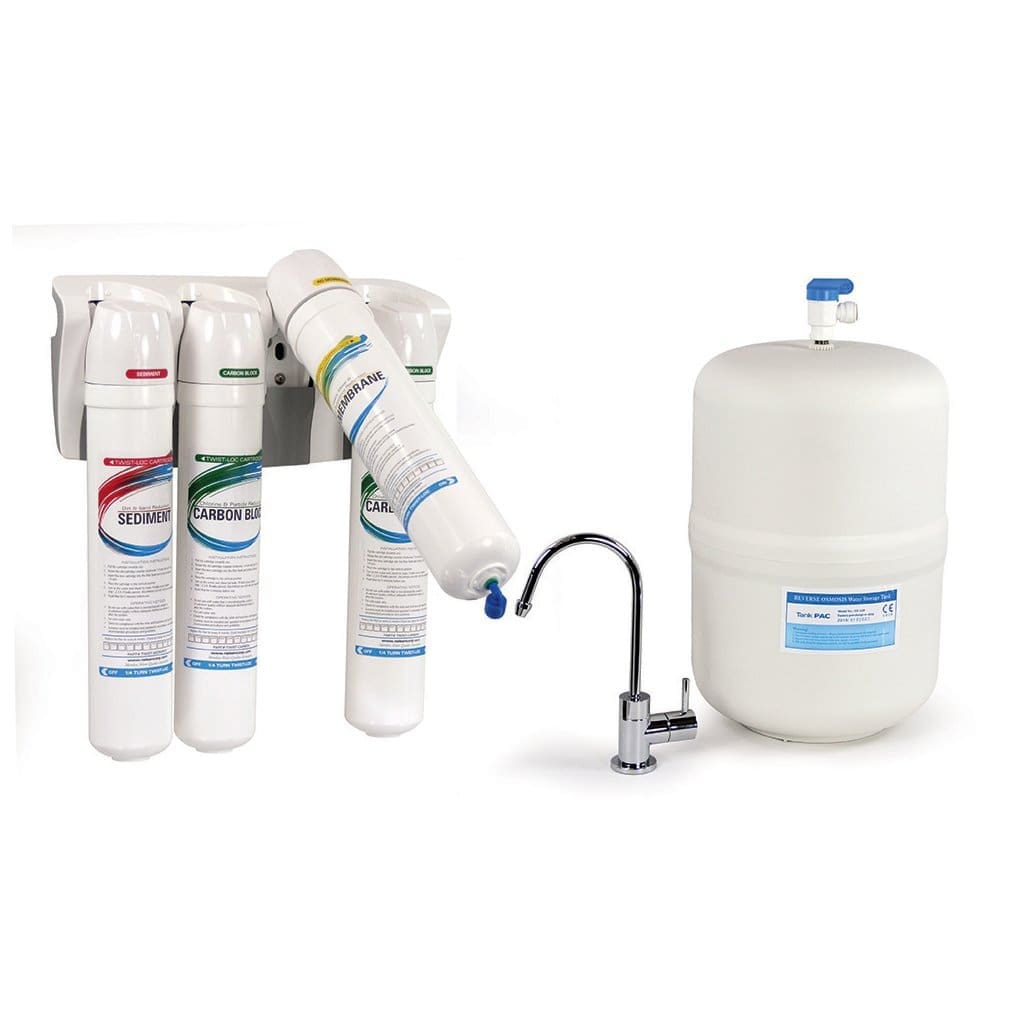
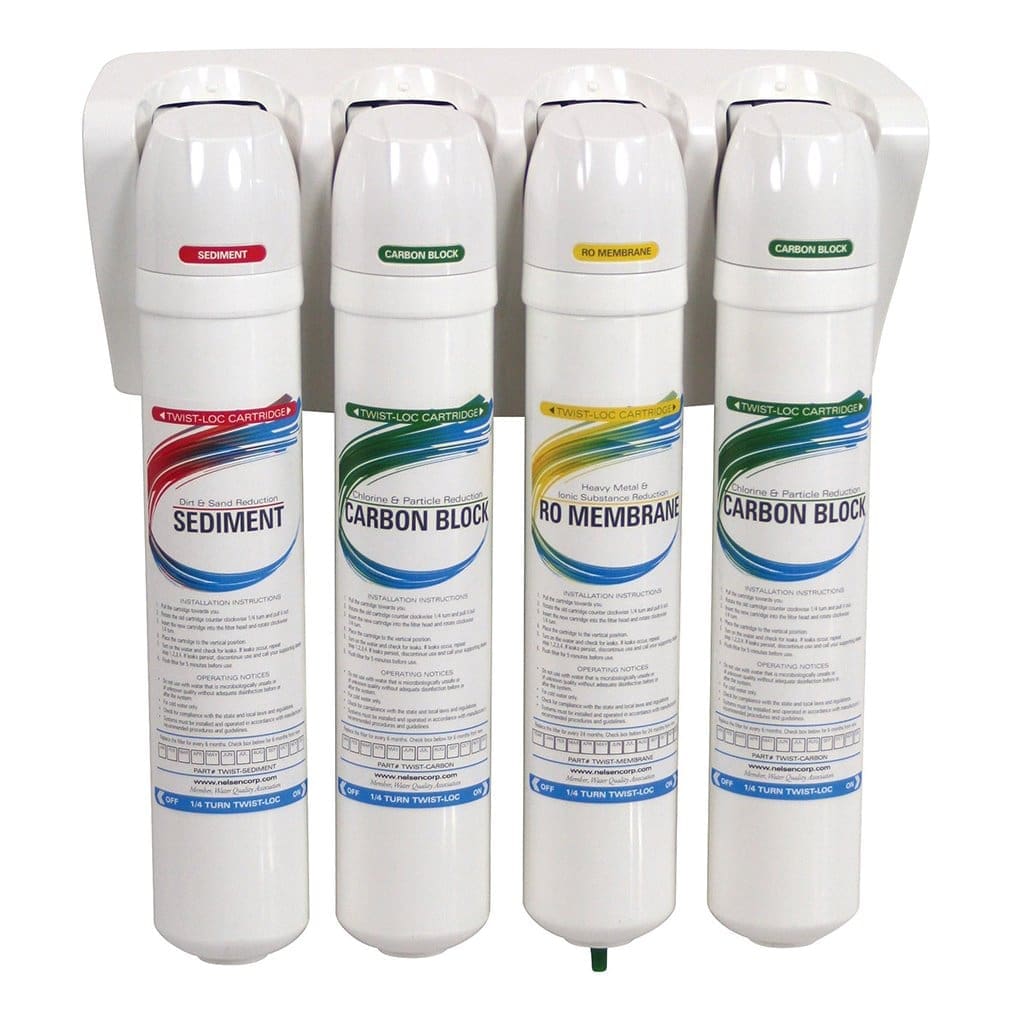
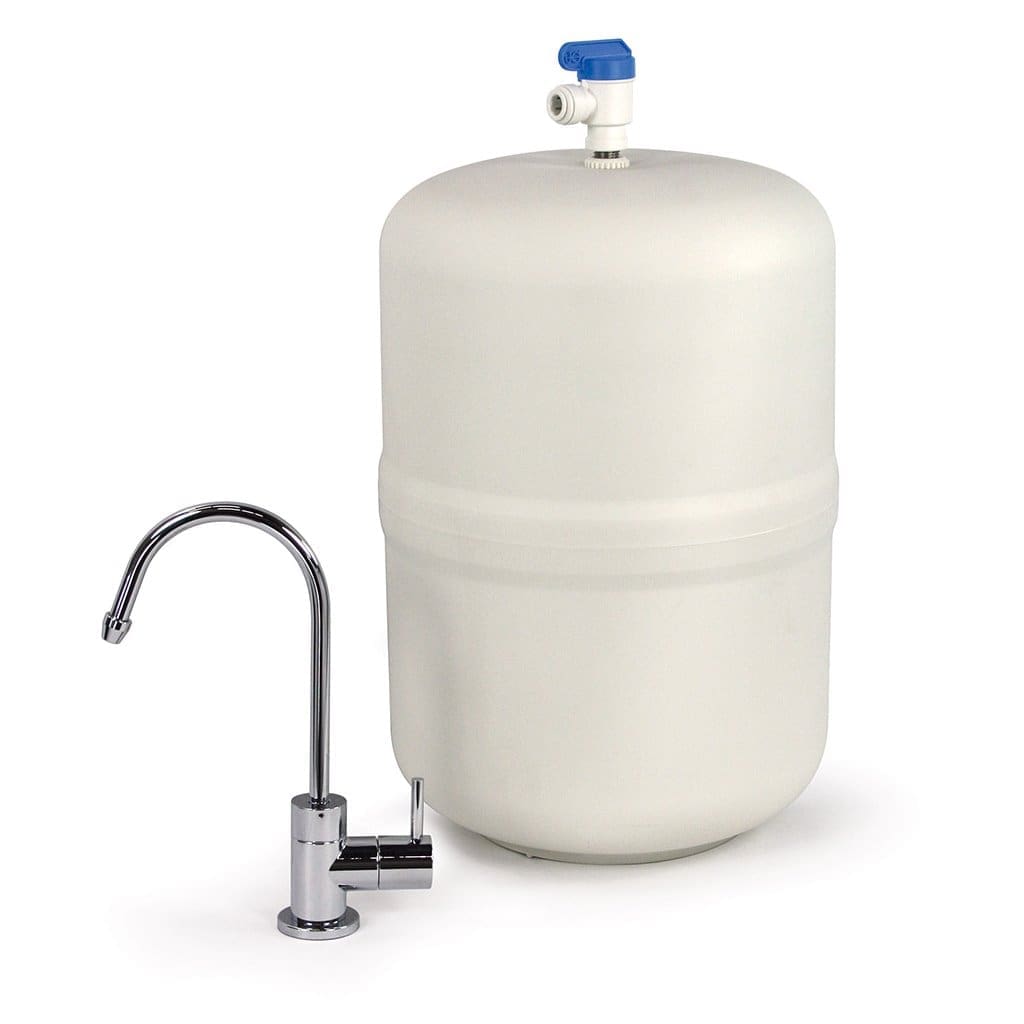
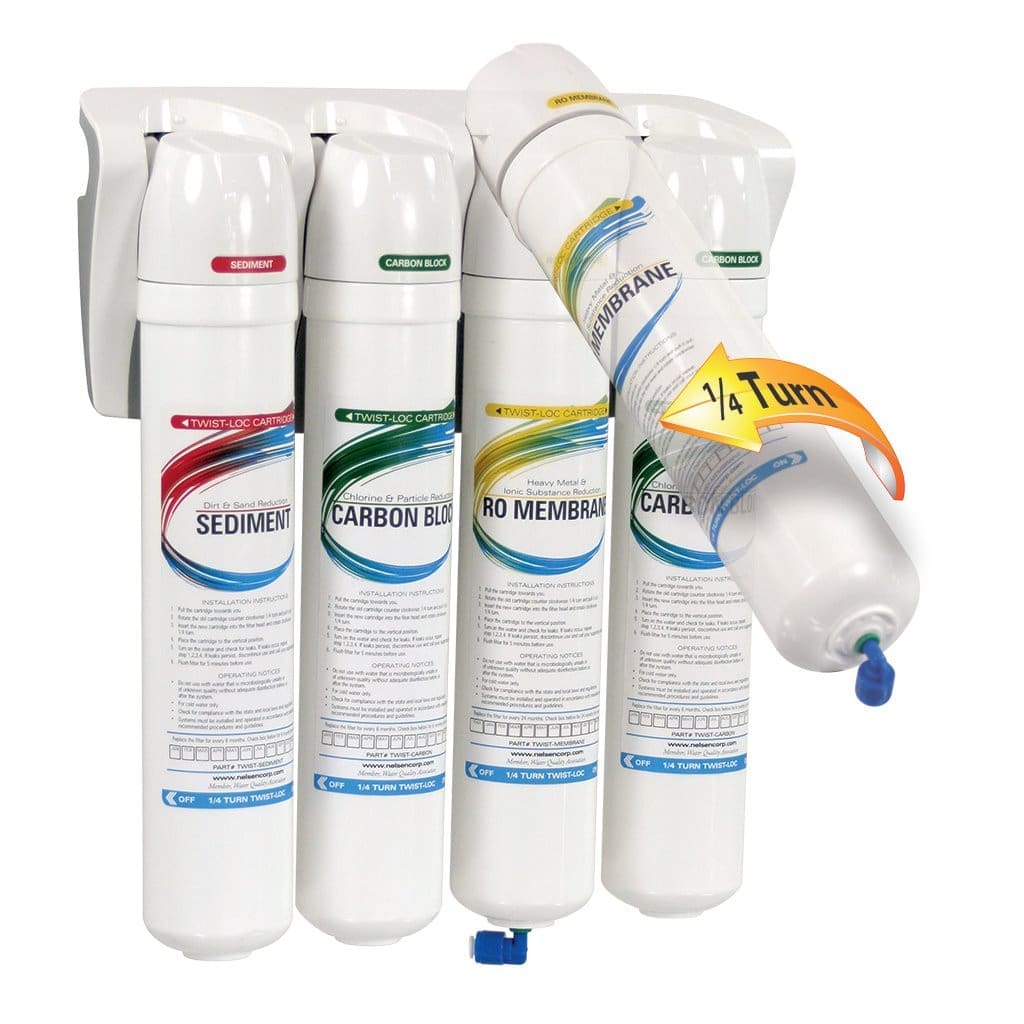
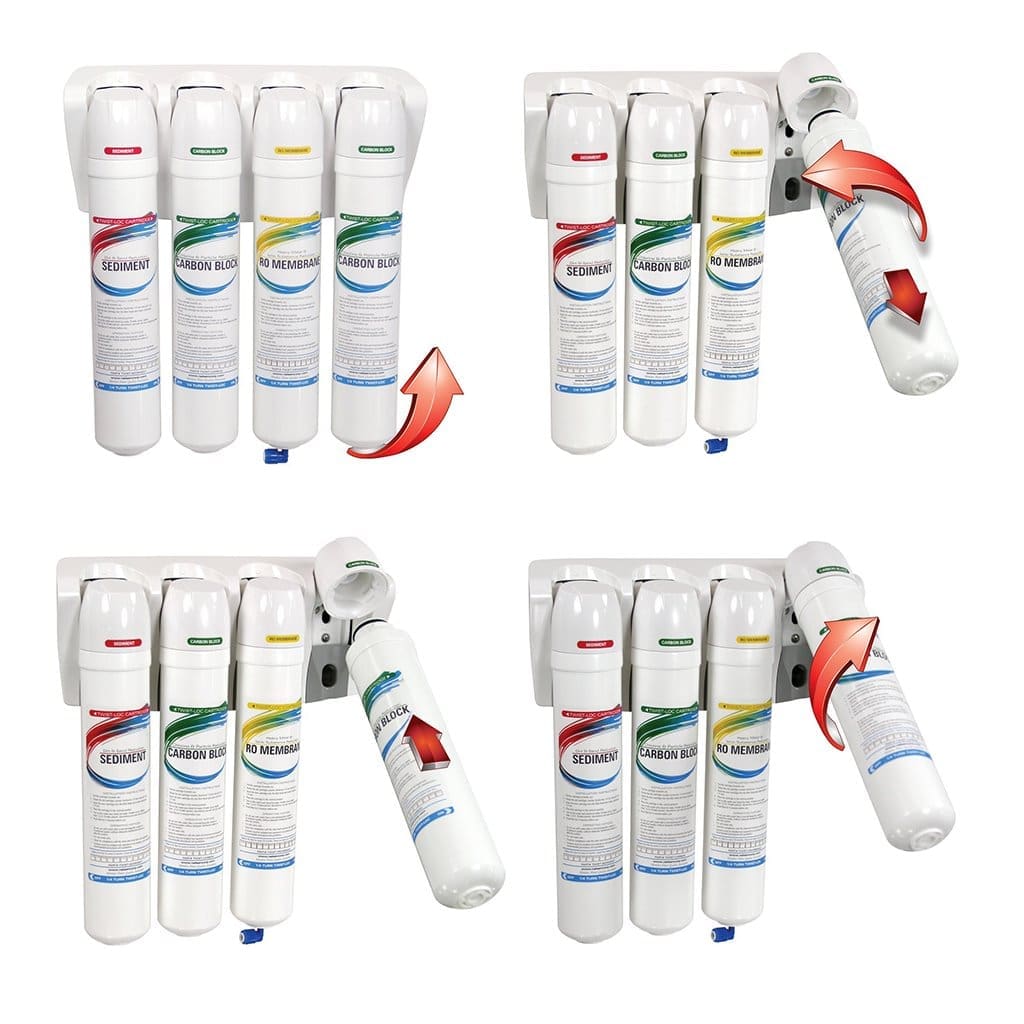

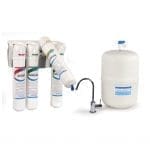






It was a little confusing for my plumber to set up, causing set backs with our move but it was totally worth it. Cleanest water I could ask for and totally worth it.
Thank you Mary! We are so glad you had a good experience!